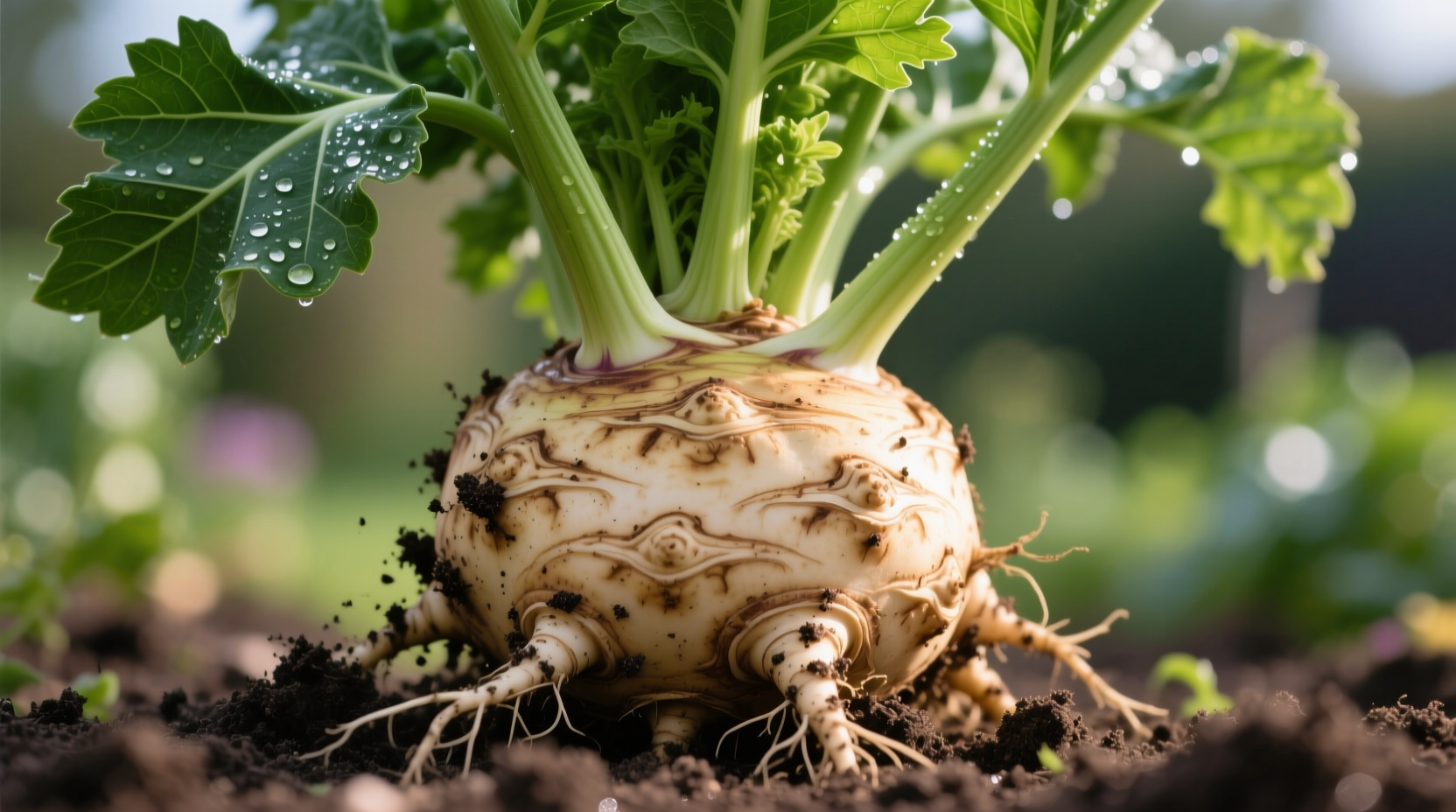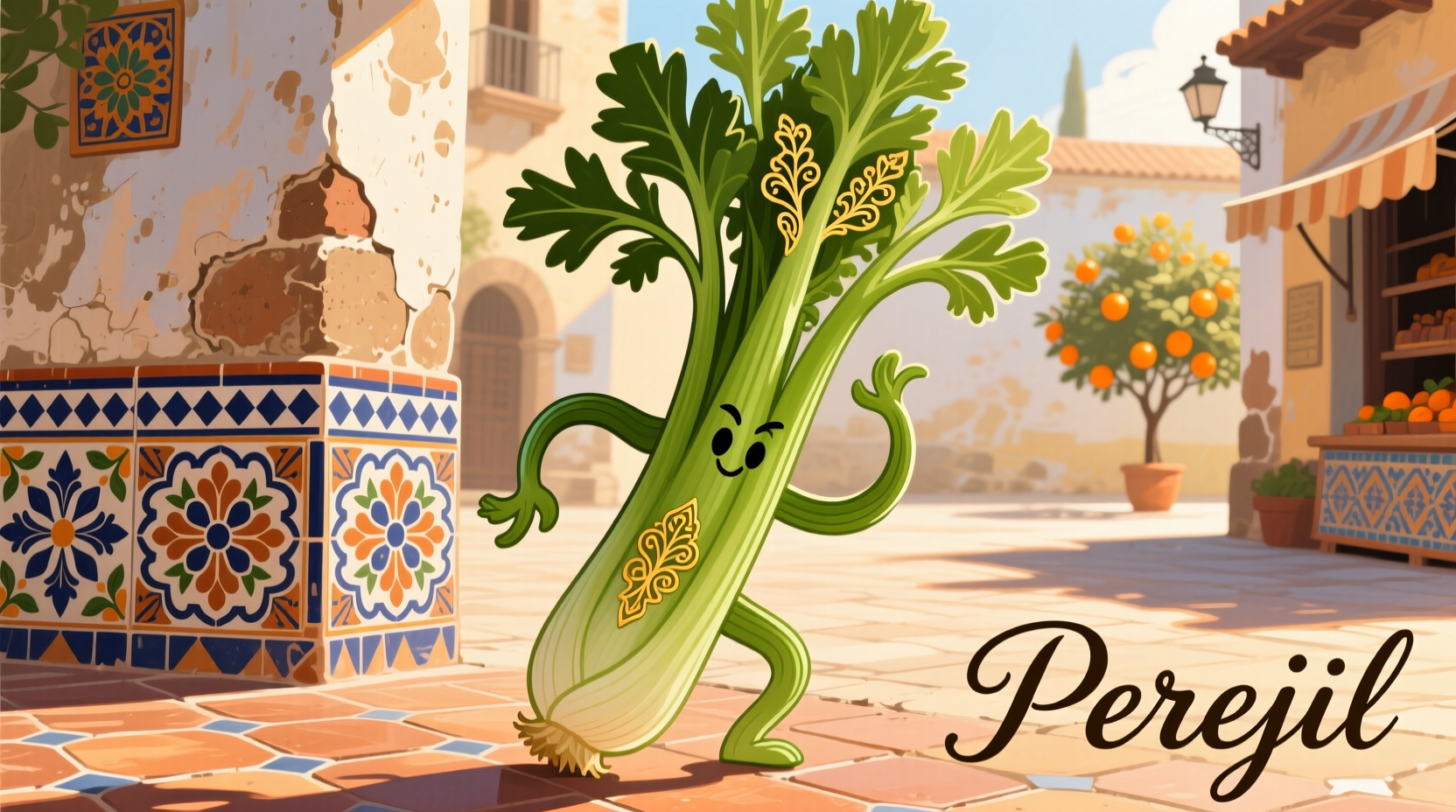Why the Confusion Around Spanish Celery?
Many home cooks encounter the term "Spanish celery" on grocery store labels or in older recipe books and assume it refers to a specific Spanish variety of the familiar green stalk vegetable. This misunderstanding persists because of historical naming conventions that don't reflect botanical reality. The USDA Agricultural Research Service confirms that Apium graveolens has three main varieties: stalk celery, leaf celery, and celeriac (root celery)—none of which are specifically Spanish in origin.
Celeriac: The Real Identity Behind Spanish Celery
Celeriac, often mistakenly called Spanish celery, is a cultivated variety of celery grown specifically for its large, bulbous root. While regular celery develops edible stalks, celeriac channels its energy into forming an underground storage organ that can reach 4-6 inches in diameter. This root has a subtle celery-parsnip flavor with earthy notes, making it versatile in both raw and cooked applications.
| Characteristic | Celeriac ("Spanish Celery") | Regular Celery |
|---|---|---|
| Botanical Name | Apium graveolens var. rapaceum | Apium graveolens var. dulce |
| Primary Edible Part | Root bulb | Stalks and leaves |
| Flavor Profile | Subtle celery with nutty, earthy notes | Pronounced celery flavor, more bitter |
| Common Culinary Uses | Purees, roasts, salads, soups | Raw snacks, stocks, salads, stir-fries |
| Storage Life | 2-3 weeks refrigerated | 1-2 weeks refrigerated |
Historical Journey of Celeriac
Celeriac's history reveals why the "Spanish" misnomer persists. Ancient Greeks and Romans valued wild celery for medicinal purposes, but it wasn't until the 16th century that European gardeners began cultivating the root variety. According to historical records from the Royal Horticultural Society, celeriac gained popularity in French and Dutch cuisine during the 17th century, with French chefs developing many classic preparations still used today.
The "Spanish" reference likely emerged from 19th century American grocery practices when produce distributors used exotic country names to make vegetables sound more appealing. This marketing tactic was common—similar to "Chinese" cabbage (actually napa cabbage) or "Italian" parsley. The University of California's agricultural extension notes that these misnomers often stuck despite having no botanical basis.

Practical Guide to Selecting and Using Celeriac
When shopping for celeriac (marketed as Spanish celery), look for firm, heavy bulbs without soft spots or cracks. Smaller bulbs (3-4 inches) typically have more tender flesh. The USDA FoodData Central database shows that celeriac contains 42 calories per 100g, with significant amounts of vitamin K (24% DV), phosphorus (10% DV), and vitamin B6 (8% DV)—making it more nutrient-dense than regular celery stalks.
Preparation Techniques
- Peeling: Use a sharp knife to remove the tough outer layer, working from top to bottom
- Preventing browning: Submerge cut pieces in acidulated water (1 tbsp lemon juice per quart of water)
- Cooking methods: Roasting enhances sweetness, boiling creates smooth purees, and raw it adds crunch to salads
Culinary Applications Across European Traditions
Despite its misleading "Spanish" nickname, celeriac features prominently in French, German, and Eastern European cuisines. In France, it's the star of céleri rémoulade, a classic salad with remoulade sauce. Northern European countries often feature it in winter soups and stews. The misconception about Spanish origins may stem from Spain's historical role in global trade routes, but Spanish cuisine actually uses minimal celeriac compared to French cooking.
Nutritional Comparison: Celeriac vs. Regular Celery
While both come from the same plant family, their nutritional profiles differ significantly. According to USDA data, celeriac contains approximately seven times more carbohydrates and five times more protein than regular celery stalks. It's also substantially higher in dietary fiber and certain vitamins. This makes celeriac a more substantial ingredient suitable as a vegetable side dish, while regular celery functions primarily as a flavoring agent or low-calorie snack.
Common Substitutes When Celeriac Is Unavailable
If your grocery store lists "Spanish celery" but doesn't stock it, consider these alternatives:
- Parsnips: Similar earthy sweetness but less celery flavor
- Jicama: Comparable texture when raw but milder flavor
- Turnips: Good for cooking applications but more peppery
- Combination approach: Mix celery stalks with potatoes for similar texture and flavor profile
Preserving Traditional Knowledge of Root Vegetables
As culinary historian Sophie Dubois explains, "Understanding the true nature of ingredients like celeriac helps us appreciate Europe's rich vegetable traditions beyond superficial naming conventions. The French have cultivated celeriac in Normandy for generations, creating techniques that maximize its delicate flavor—knowledge that's being preserved through modern culinary education." This perspective highlights why accurate ingredient identification matters for maintaining authentic cooking traditions.











 浙公网安备
33010002000092号
浙公网安备
33010002000092号 浙B2-20120091-4
浙B2-20120091-4